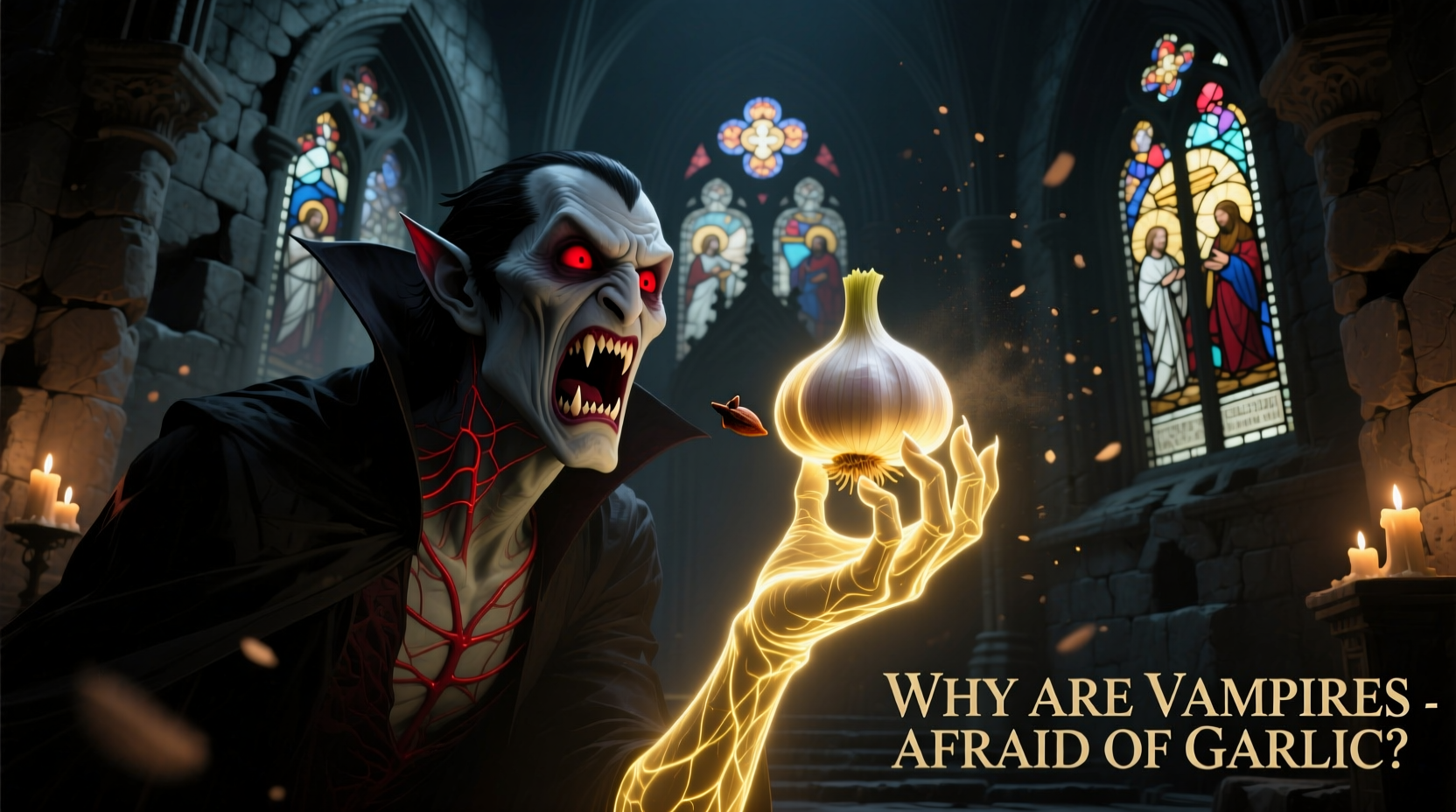Vampires are traditionally depicted as fearing garlic due to ancient European folklore where garlic was believed to possess powerful protective and purifying properties against evil spirits and supernatural threats. This association became cemented in vampire mythology through 19th century literature, particularly Bram Stoker's "Dracula," which popularized garlic as a defense against vampires.
Have you ever wondered why vampires in stories consistently recoil from a simple kitchen staple? The answer lies not in biology but in centuries of cultural beliefs that transformed garlic from culinary ingredient to supernatural shield. Understanding this peculiar connection reveals how folklore evolves and why certain myths endure in our collective imagination.
Tracing the Roots: How Garlic Became Vampire Repellent
The association between garlic and protection against evil dates back millennia, long before vampires entered popular consciousness. Ancient civilizations across Europe and Asia valued garlic not just as food but as a spiritual safeguard.
| Era | Cultural Belief | Garlic's Protective Role |
|---|---|---|
| Ancient Greece & Rome | Garlic warding off evil spirits | Hung at doorways and worn as amulets |
| Medieval Europe | Protection against witchcraft and demons | Placed in cradles and around homes |
| 18th-19th Century Balkans | Defense against vampire attacks | Worn around neck or placed in graves |
| Modern Era | Cultural symbol of vampire weakness | Popularized through literature and film |
This historical timeline shows how garlic's reputation evolved from general spiritual protection to specifically targeting vampire threats. In Eastern European folklore—where vampire myths were most prevalent—garlic became incorporated into burial practices to prevent the dead from rising. Communities in regions like Romania and Bulgaria would place garlic in coffins or around graves of those suspected of becoming vampires.
The Scientific Angle: Why Garlic Made Sense as Protection
While no scientific evidence supports garlic repelling actual vampires (as they don't exist), historical medical beliefs provided plausible reasoning for our ancestors. During periods of plague and disease outbreaks:
- Garlic's strong odor was thought to purify contaminated air believed to carry disease
- Its documented antimicrobial properties (though not understood at the time) may have provided actual health benefits to those using it
- In eras before germ theory, illnesses that caused vampire-like symptoms (such as porphyria) were mistaken for supernatural afflictions
According to research from the National Library of Medicine, certain rare conditions like congenital erythropoietic porphyria can cause light sensitivity and receding gums (creating an appearance of elongated teeth), potentially contributing to vampire folklore. While garlic wouldn't actually help with these conditions, its historical medicinal use created logical connections in pre-scientific thinking.
Bram Stoker's Crucial Role in Vampire-Garlic Lore
While vampire folklore existed across Eastern Europe, the specific connection between vampires and garlic became globally recognized through Bram Stoker's 1897 novel Dracula. Stoker drew from various regional myths but consolidated them into a cohesive narrative that shaped modern vampire mythology.
In Dracula, Professor Van Helsing prescribes garlic as protection against the titular vampire, placing it around Mina's neck and in her room. This literary moment transformed a regional folk practice into a universal vampire weakness. Stoker's work drew from:
- Transylvanian burial customs involving garlic
- 19th century European fascination with Eastern European folklore
- Contemporary medical beliefs about disease transmission
The novel's massive popularity cemented garlic as vampires' primary weakness in Western consciousness, influencing nearly all subsequent vampire portrayals in film, television, and literature.
Modern Interpretations and Cultural Variations
Today's vampire stories continue the garlic tradition while sometimes reimagining it. While classic horror maintains the repulsion trope, contemporary works like Twilight or What We Do in the Shadows play with or subvert this expectation.
Cultural variations persist globally:
- In Romanian folklore, garlic protected against strigoi (spiritual vampires)
- Russian vampire myths featured garlic as protection but emphasized other weaknesses
- Chinese jiangshi (hopping vampires) are repelled by rice and mirrors, not garlic
Anthropological research from The Journal of American Folklore documents how immigrant communities carried these beliefs to new countries, where they blended with local traditions. This cultural transmission explains why garlic's vampire-repelling properties remain recognizable worldwide despite originating in specific regional practices.

Why This Myth Matters Today
Understanding why vampires are afraid of garlic in folklore reveals more than just vampire trivia—it shows how societies process fear through storytelling. When communities faced unexplained deaths or diseases, they created narratives with logical defenses, turning everyday items like garlic into powerful symbols of protection.
These myths served practical purposes:
- Providing psychological comfort during epidemics
- Reinforcing cultural traditions around death and burial
- Creating shared community practices for perceived threats
Next time you encounter garlic in vampire stories, recognize it as a cultural artifact representing humanity's enduring effort to make sense of the unknown through symbolic protection. Whether you're researching historical vampire folklore origins or simply enjoying a horror movie, this understanding adds depth to a tradition that has survived for centuries.











 浙公网安备
33010002000092号
浙公网安备
33010002000092号 浙B2-20120091-4
浙B2-20120091-4